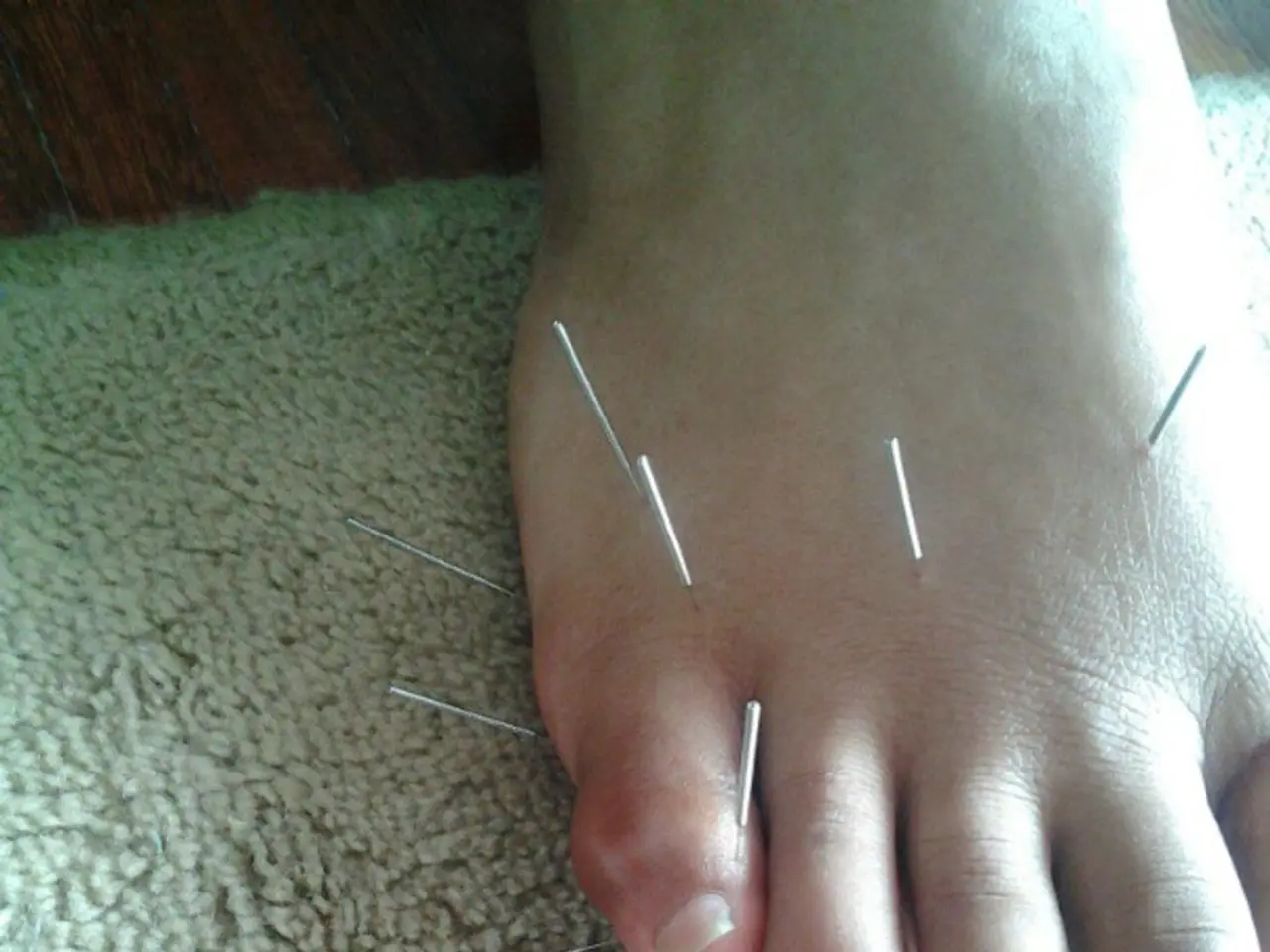Guide on Conducting a Personal Testicular Examination
In a survey conducted by CACTI, it was found that a staggering 30% of men are unaware of the significance of self-examining their testicles [1]. This lack of knowledge could potentially lead to delayed detection and treatment of testicular cancer, a condition that is often curable when caught early.
Testicular self-exams are crucial for early detection, as testicular cancer is most commonly diagnosed in men aged 20 to 40 [4]. Regular self-exams can help identify any unusual changes that may require medical attention.
Performing a self-exam once a month is recommended for early detection [4]. The recommended steps during the exam are as follows:
- Perform the exam in the shower or bath, where warm water relaxes the scrotum, making it easier to feel changes [2].
- Gently roll each testicle between your thumb and fingers to feel for any lumps, swelling, or hard areas [2].
- Pay attention to any changes in size, shape, firmness, or the presence of a lump/dull ache [2][4].
- If you detect anything unusual, such as a lump or swelling, consult your doctor or a urologist immediately for further evaluation [2][4].
Common causes of testicle lumps include hydroceles, varicoceles, epididymitis, and orchitis. Understanding these conditions can help in early detection and treatment [5].
It's essential to note that testicular cancer can occur in anyone with testicles, regardless of their gender identity [6]. If testicular cancer is suspected, further tests will be arranged to decide the best course of treatment [3].
The survey also revealed that 17% of men know self-examinations are important but do not know how to perform them [1]. Nearly 80% of men surveyed fear they will not survive testicular cancer, despite it often having a positive outlook [2]. However, over two-thirds of men stated they would check more regularly if they knew how important self-exams are [1].
Early diagnosis of testicular cancer significantly increases the survival rate, with 97% of individuals surviving at least 5 years after diagnosis [3]. Regular at-home self-examinations can help identify any worrying signs of testicular cancer early.
In summary, a monthly self-exam in the warm shower, carefully feeling both testicles for any abnormalities, and promptly seeing a doctor if you find anything new or unusual is the advised routine for early testicular cancer detection [1][2][4].
- A lack of knowledge about the importance of self-examining testicles can potentially lead to delayed detection and treatment of testicular cancer, a condition that is often curable when caught early.
- Testicular self-exams are crucial for early detection, as testicular cancer is most commonly diagnosed in men aged 20 to 40.
- Regular self-exams can help identify any unusual changes that may require medical attention.
- Performing a self-exam once a month is recommended for early detection, and the recommended steps during the exam are as follows.
- In the shower or bath, warm water relaxes the scrotum, making it easier to feel changes.
- Gently roll each testicle between your thumb and fingers to feel for any lumps, swelling, or hard areas.
- Pay attention to any changes in size, shape, firmness, or the presence of a lump/dull ache.
- If you detect anything unusual, such as a lump or swelling, consult your doctor or a urologist immediately for further evaluation.




